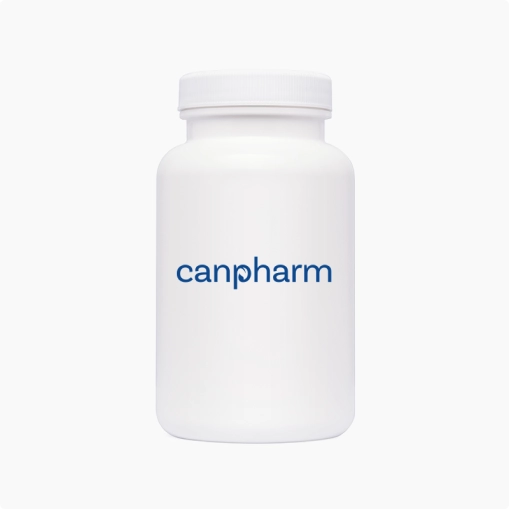
Fabrazyme (agalsidase beta)
Out of stock
We will notify you as soon as it becomes available.
-
Description
-
Related Products
-
Related Conditions
Fact Table
| Fact Table | |
|---|---|
| Formula | Not applicable (biologic) |
| License | FDA approved |
| Bioavailability | Not applicable (biologic) |
| Legal status | Prescription required |
| Chemical Name | Agalsidase beta |
| Elimination half-life | Approximately 45 minutes |
| Dosage (Strength) | Varies depending on patient's weight and condition |
| Pregnancy | Category B - No evidence of risk in humans; consult healthcare provider |
| Brands | Fabrazyme |
| Protein binding | Not applicable (biologic) |
| PubChem CID | Not applicable (biologic) |
| MedlinePlus | Not applicable (biologic) |
| ChEBI | Not applicable (biologic) |
| ATC code | A16AB06 |
| DrugBank | DB00095 (Agalsidase beta) |
| KEGG | D02972 (Agalsidase beta) |
| Routes of administration | Intravenous infusion |
Fabrazyme (agalsidase beta) is a recombinant form of the human enzyme α-galactosidase A, used in the treatment of Fabry disease. This genetic disorder is characterized by the buildup of a specific type of fat, globotriaosylceramide, in the body's cells. Fabrazyme works by replacing the deficient enzyme, helping to break down this fat and prevent its accumulation in organs and tissues. Administered via intravenous infusion, Fabrazyme is essential for patients with Fabry disease to manage symptoms and improve quality of life.
Before you buy Fabrazyme, it is crucial that you talk to your healthcare provider about potential side effects and Fabrazyme cost.
Directions
Fabrazyme is administered by a healthcare professional as an intravenous infusion. The standard dosage is 1 mg/kg body weight every two weeks. Before starting treatment, patients must be evaluated by a healthcare provider to ensure suitability for enzyme replacement therapy. During each infusion session, patients are monitored for reactions, and the infusion rate may be adjusted based on patient tolerance.
Ingredients
Active Ingredient: Agalsidase beta 35 mg.
Cautions
Patients should discuss their complete medical history with their healthcare provider before starting Fabrazyme. It is crucial for patients with known allergies to agalsidase beta or any of the formulation's components to avoid this treatment. Due to potential risks, Fabrazyme should be administered under the supervision of a healthcare professional equipped to manage anaphylaxis or severe hypersensitivity reactions.
Interactions
There are no known significant interactions between Fabrazyme and other medications; however, it is important for patients to inform their healthcare providers about all medications they are currently taking, including over-the-counter drugs, herbal supplements, and vitamins. This ensures safety and efficacy of all concurrent treatments.
Side Effects
Common side effects of Fabrazyme infusion include:
- Headaches
- Nausea
- Fever
- Chills
- Rash
- Fatigue
- Pain at the infusion site
Frequently Asked Questions about Fabrazyme
What is Fabry disease and how does Fabrazyme help?
Fabry disease is a genetic disorder resulting from the buildup of a specific fat in the body's cells. Fabrazyme replaces the deficient enzyme, helping to break down this fat and alleviate symptoms.
How is Fabrazyme administered?
Fabrazyme is given as an intravenous infusion by a healthcare professional, typically at a dosage of 1 mg/kg every two weeks.
Are there any side effects associated with Fabrazyme?
Yes, common side effects include headaches, nausea, fever, and chills, among others. Severe reactions can occur and include anaphylaxis and heart problems.
Can I take other medications while on Fabrazyme?
There are no known significant interactions, but you should always inform your healthcare provider about all other medications you are taking.
What should I do if I miss a dose?
If a dose is missed, contact your healthcare provider to reschedule as soon as possible to maintain the treatment's effectiveness.
Is Fabrazyme safe for pregnant or breastfeeding women?
The effects of Fabrazyme during pregnancy or breastfeeding are not well studied. It is important to discuss potential risks and benefits with your healthcare provider.
How long do I need to continue Fabrazyme therapy?
Fabrazyme is generally a lifelong therapy for patients with Fabry disease, as it replaces a continuously deficient enzyme.
Can children use Fabrazyme?
Yes, Fabrazyme is approved for use in children; however, treatment specifics should be discussed with a pediatric specialist.
What precautions should I take before starting treatment?
Undergo a thorough medical evaluation, and discuss all allergies and medical conditions with your healthcare provider.
Where can I get Fabrazyme?
Fabrazyme is available through specialized healthcare providers and facilities equipped to handle enzyme replacement therapies and monitor patients during infusions.
